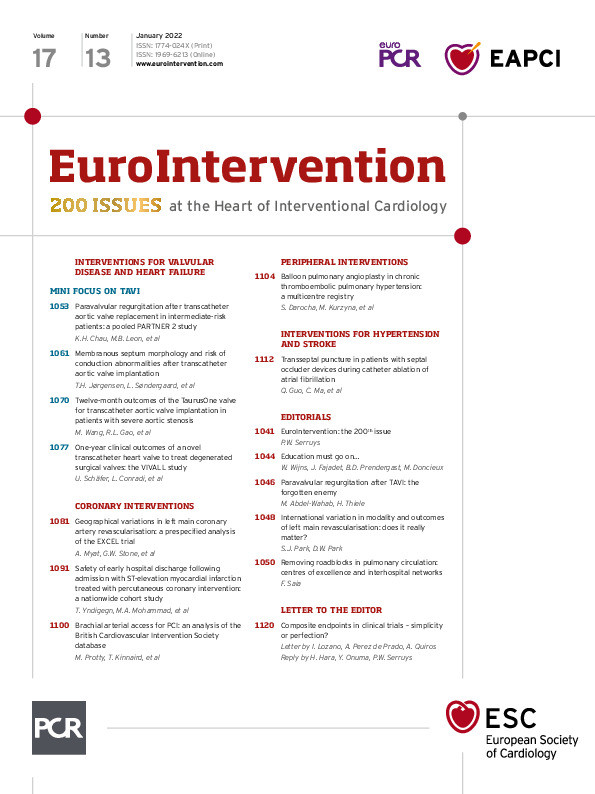We read with great interest the manuscript by Hara et al1 about composite endpoints in cardiovascular disease. We would like to congratulate the authors for their fantastic contribution to the spread of knowledge on this fascinating topic. Composite endpoints are the cornerstone of the primary objective in clinical trials and they define the success or failure of the study. As the authors mention, the Academic Research Consortium has recently established that patient-oriented outcomes should be considered the focus of novel device and pharmacotherapeutic agent assessment. The time-to-first-event method has traditionally been central to the strategy to measure the effects but, as the authors also state, its main limitation is the equalisation of the severity among all the different endpoints. Some very well-known authors have underlined this limitation2. This approach also implies missing the occurrence of events after the first for those patients who suffered more than one event during follow-up. The current manuscript provides an easily understandable guide with which to review all the available options in order to investigate this interesting issue further, although, as we can learn from this review, all the existing options have pros and cons. What is clear is that all the tools mentioned share the favourable feature of a higher level of accuracy compared to the time-to-first-event method. However, at the same time, all of them also present an undesirable feature that may have a profound impact on one, if not the most critical, component of the trial, that is, the sample size, which undoubtedly will be much more difficult to calculate. Besides that, some of these alternatives require sophisticated software and may also be more complex for the readers to interpret. Sensitivity analyses are defined as methods to determine the robustness of an assessment by examining the extent to which results are affected by changes in methods, models, values of unmeasured variables, or assumptions, with the aim of identifying results that are most dependent on questionable or unsupported assumptions3. We believe that a reasonable approach would be a combination of both extremes: we could keep the time-to-first-event method as the tool that measures the composite primary endpoint but we can also add the most appropriate analysis shown in Hara´s review as the sensitivity analysis3 in case the results with the time-to-first-event method are close to the cut-off point of significance. Both the limit for performing the analysis and the method for assessing the sensitivity analysis should be prespecified in the methodology of the study. The additional method should be chosen depending on the design of the trial, because we have seen in this review that each of them has individual characteristics which make them more adequate in certain situations, such as the usefulness of the Cox-based models when the follow-up duration differs from patient to patient and the impossibility of using the negative binomial regression in that particular scenario.
Conflict of interest statement
The authors have no conflicts of interest to declare.
Supplementary data
To read the full content of this article, please download the PDF.

